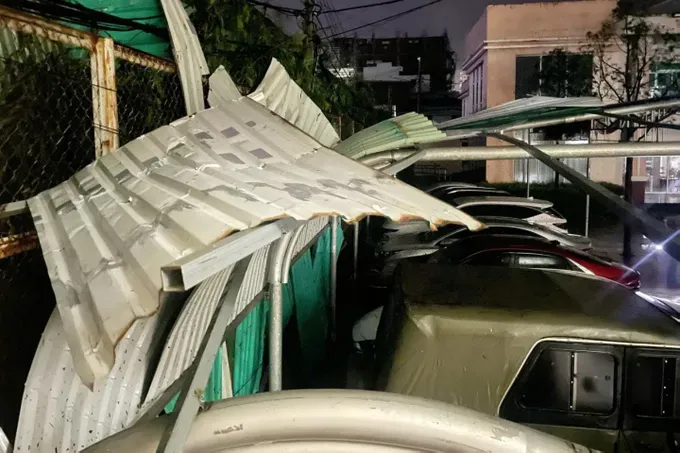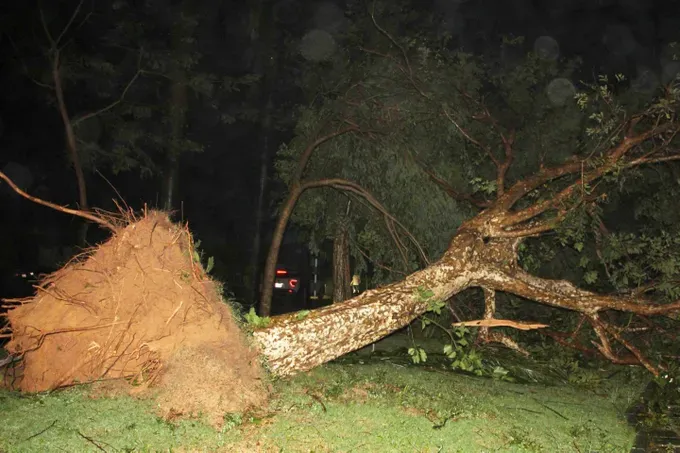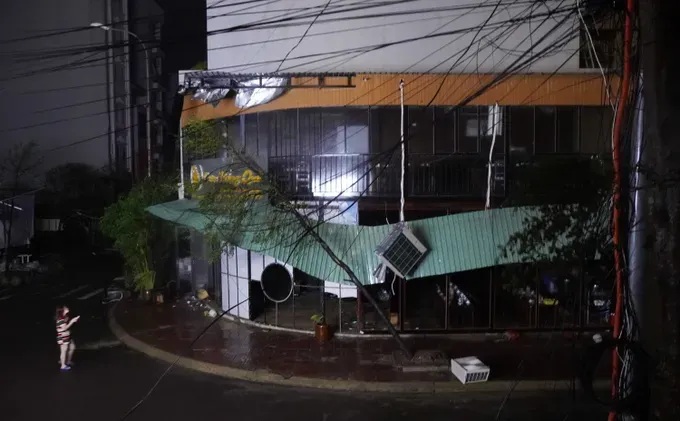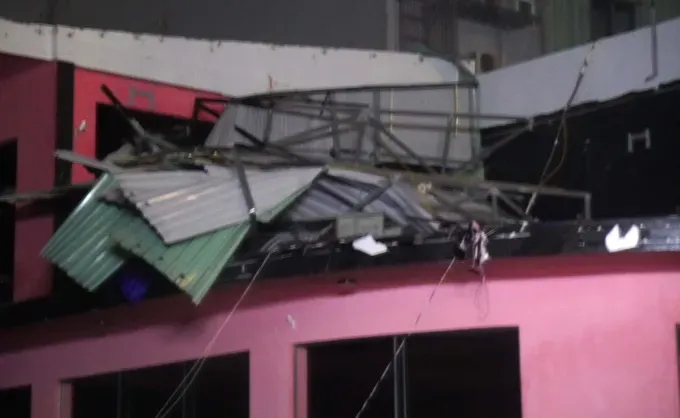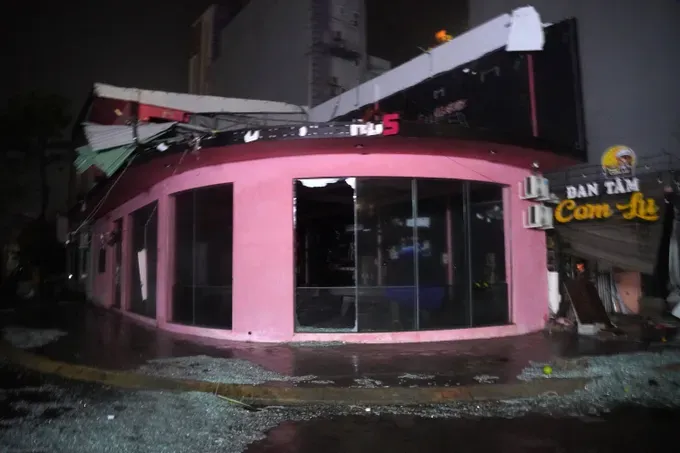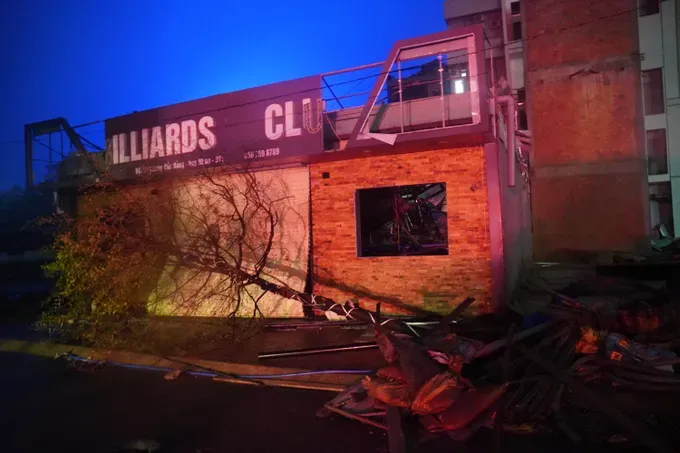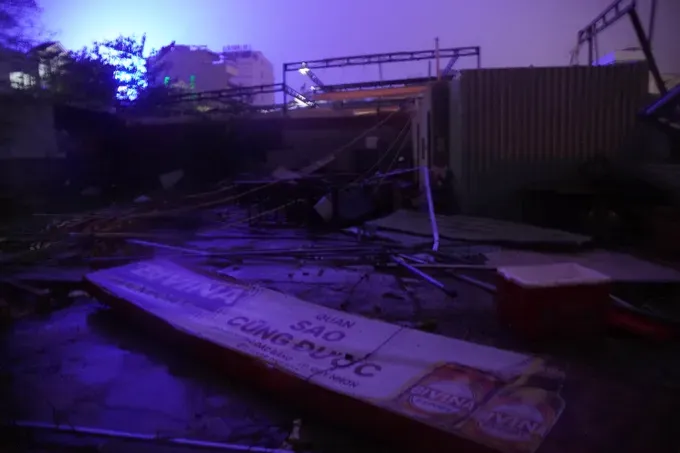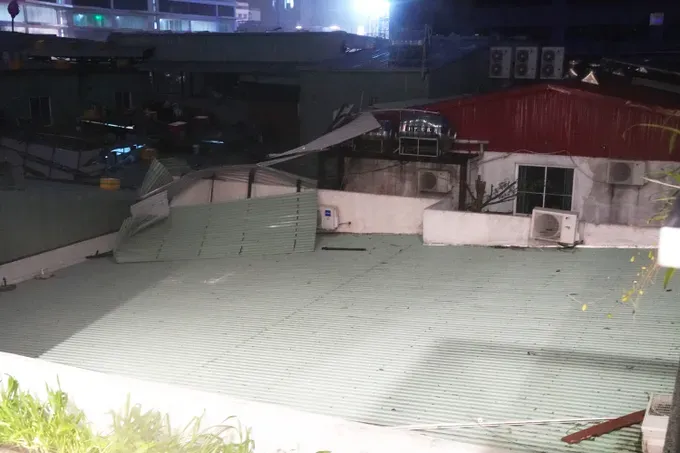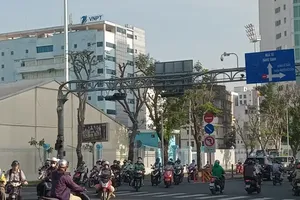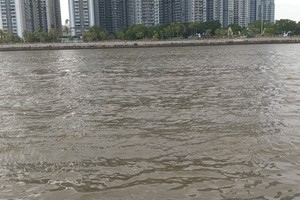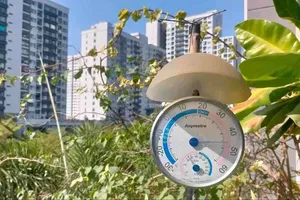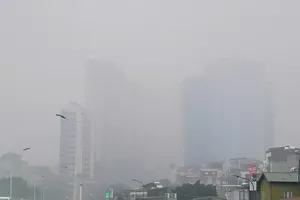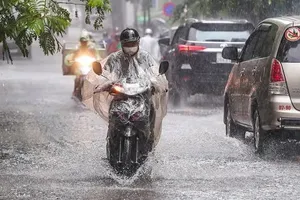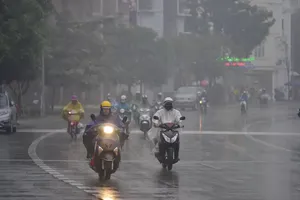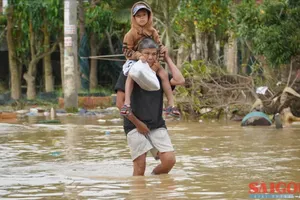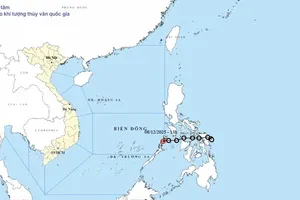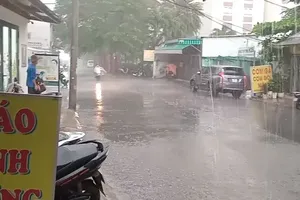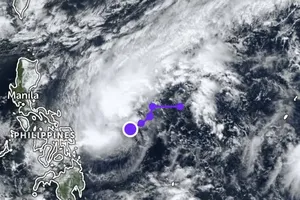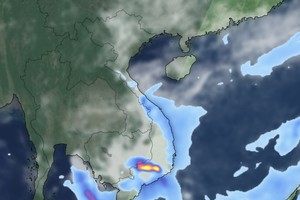The storm’s circulation also brought torrential rain and strong gusts to several provinces, including Da Nang, Quang Ngai and Khanh Hoa, leaving residents of the Central region battling the fierce storm through the night.

According to the National Center for Hydro-Meteorological Forecasting, as of 10 p.m. on November 6, the storm’s center was located over the border of Dak Lak and Gia Lai provinces, with maximum sustained winds of 75–102 kilometers per hour (equivalent to category 9–10) and gusts reaching category 12.
Mr. Mai Van Khiem, Director of the National Center for Hydro-Meteorological Forecasting, said that although the storm had weakened, wind speeds still reached category 11–13, with gusts up to category 15–16 as its eye made landfall around 7 p.m. on November 6.
Both Vietnamese and international meteorological agencies forecast that after moving inland, the storm would weaken into a tropical depression over southern Laos by the morning of November 7.
He added that extremely heavy rainfall was recorded in Quang Ngai and Gia Lai provinces, warning that the Central Highlands faced high risks of landslides and flash floods.
The National Center for Hydro-Meteorological Forecasting predicted that after the storm, extremely heavy rainfall would continue across areas from Da Nang City to Dak Lak Province, ranging from 200 to 400 millimeters, with some locations exceeding 600 millimeters.
From southern Quang Tri Province to Hue City, as well as Khanh Hoa and Lam Dong provinces, rainfall would reach 150 to 300 millimeters, locally over 450 millimeters, through the night of November 7.
On November 8, rainfall of 50 to 100 millimeters, locally more than 200 millimeters, was expected from Thanh Hoa to northern Quang Tri.
On the evening of November 6, as typhoon No. 13 approached the mainland, strong winds and rough seas battered the coastal provinces of the South-Central region. Multiple areas experienced tornadoes, storm surges, and high waves threatening fishing villages.
By 11 p.m. on November 6, winds had begun to weaken in the eastern part of Gia Lai Province, where was directly hit by the storm’s center. In Quy Nhon City, numerous homes, shops, buildings, trees and urban structures suffered extensive destruction.
Strong winds from the storm blew the roofs off about 500 houses, uprooted many trees and left one person injured.
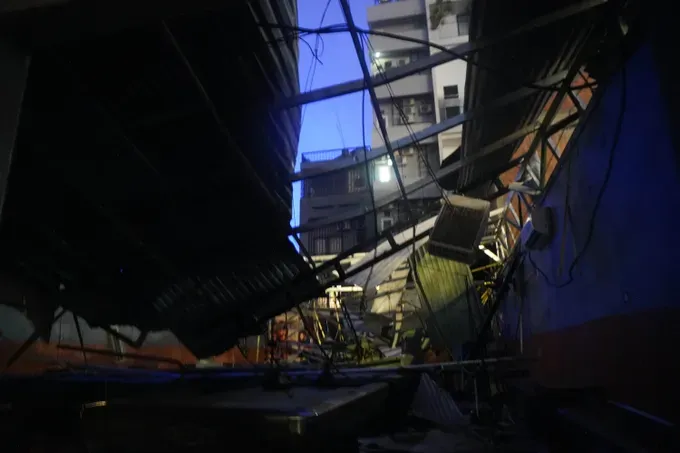
In Quy Nhon City, from 4 p.m. to 6:30 p.m., powerful gusts struck repeatedly, shaking buildings, uprooting trees and tearing off metal roofs.
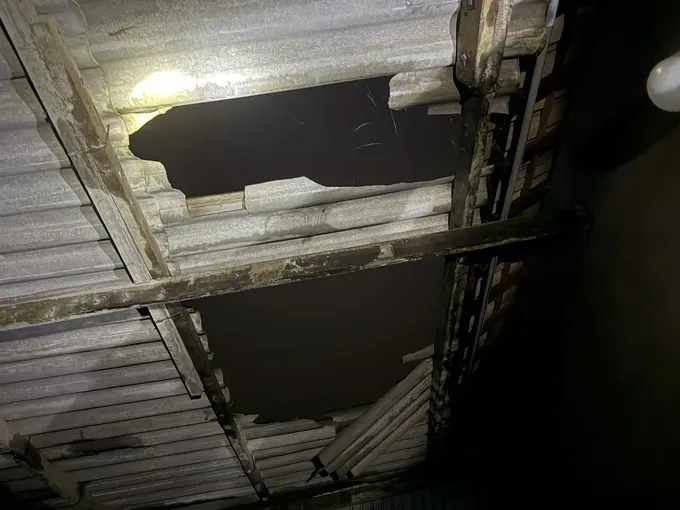
By 9:50 p.m., in the coastal city of Quy Nhon, Gia Lai Province, which was directly struck by typhoon No. 13, the wind intensity had started to subside.
After the storm passed, much of urban Quy Nhon lay in ruins, with trees, buildings, houses and other structures toppled, collapsed, or severely damaged.

Mr. Pham Anh Tuan, Chairman of the Gia Lai Provincial People’s Committee, said that typhoon No. 13 was extremely powerful, and the province prioritized protecting human lives above all. Throughout the day, authorities evacuated 1,050 households totaling 3,455 residents to reinforced shelters and public offices. Earlier, the province had completely suspended all sea activities.


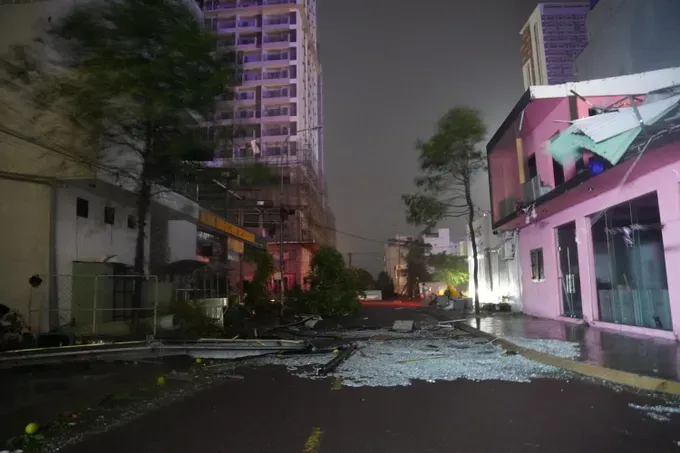
In a brief interview with Sai Gon Giai Phong (SGGP) Newspaper reporters, a leader of the De Gi Commune People’s Committee in Gia Lai Province said that during typhoon No. 13, rising tides and strong waves swept away several fishing boats anchored in the De Gi Lagoon.
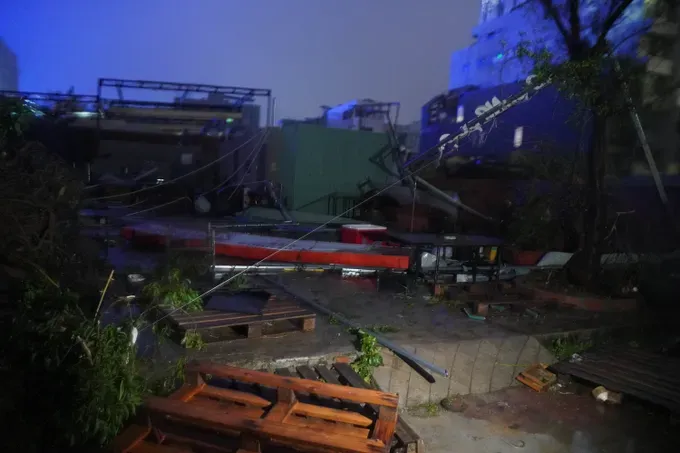
According to local residents, the incident occurred around 9:30 p.m., when the storm made landfall and affected the eastern communes and wards of Gia Lai Province. A short video recorded by residents showed multiple fishing boats being carried away by large waves in the De Gi Lagoon, with one vessel reportedly sunk.
On the same afternoon, Quang Ngai Province authorities evacuated more than 5,500 households with 18,000 residents to evacuation sites.
In Quang Ngai Province, initial reports indicated that 50 houses in the communes of Long Phung, Ba To, Ba Dinh, and Ngoc Linh had their roofs blown off or sustained damage. A school in Ngoc Linh Commune also lost its roof.
On Ly Son Island, Quang Ngai Province, at around 3 p.m., two locals took a basket boat out to sea to rescue a person in distress and successfully pulled the victim aboard. However, due to the rough seas and powerful winds, all three were swept far from shore.
On Ly Son Island in Quang Ngai Province, the Chairman of the Ly Son Special Zone People’s Committee reported that wind speeds had decreased to force 6, while seawater rose more than four meters, flooding about 500 houses in Tay Hamlet, An Hai Commune. Numerous fences and glass windows of local homes were shattered.
The transport ship VT0035 launched a search operation, but it had to be suspended because of high waves and strong winds. As of 7:30 p.m., the three people had not yet been found. Local authorities in Quang Ngai Province have since requested assistance from the border guard, navy and coast guard to help search for the missing ones.
On the evening of November 6, the Chairman of the Ly Son Special Zone People’s Committee, Quang Ngai Province, reported that wind speeds in the locality had decreased to category 6, with gusts reaching category 7–8. However, the special zone was facing severe coastal flooding due to high tides.
Tidal surges of more than four meters in Tay Hamlet, An Hai Commune, have flooded around 500 houses. Some residential fences and glass doors have been shattered.
At 10 p.m., according to a rapid report from the Quang Ngai Provincial Sub-Department of Irrigation, torrential rain and whirlwinds had already caused initial significant damage in multiple localities.
That same evening, as typhoon No. 13 made landfall in the Central region, a sudden cyclone struck Long Phung Commune in Quang Ngai Province, unroofing or damaging 45 houses.
The storm also damaged three houses in Ba To Commune, two in Ba Dinh Commune and several others in Ngoc Linh Commune.
Severe weather caused disruption to the province’s transportation system. On National Highway 24 through Ba To Commune, fallen trees blocked traffic at Km25+300 and Km31+800, but authorities quickly cleared the road.
In Ba Dinh Commune, a hillside landslide brought down about 20 cubic meters of soil and several trees onto the roadway. Local authorities mobilized emergency crews to conduct temporary repairs.
Long Phung Commune reported coastal erosion along a 230-meter stretch of road, while in Son Mai Commune, a large dipterocarp tree fell across the Provincial Road 624.
Of particular concern, a large crack appeared on the slope of Wang Voi hill in Ta Noat Hamlet, Ba Vi Commune, posing a high risk of landslides. Local authorities urgently evacuated 23 households, totaling 54 residents, to safer areas.
Meanwhile, Ly Son Island continued to experience heavy rain, rough seas, and winds at levels 8–9 with gusts up to level 10.
At 10:40 p.m., the Chairman of the Mang Ri Commune People’s Committee, Quang Ngai Province, reported that the storm had collapsed the wall of one house in Ko Xia 2 Hamlet and ripped the roof off another in Tu Tho Hamlet. Power outages were reported in 12 out of 31 hamlets in the commune.
According to the Command Center of Dak Lak Province, preliminary assessments indicated damage in several eastern communes after typhoon No. 13 passed through. Around 20 houses were either unroofed or collapsed. One person was reported dead and another injured when a house collapsed. Local authorities and emergency forces are urgently assessing the situation and assisting residents in recovery efforts.
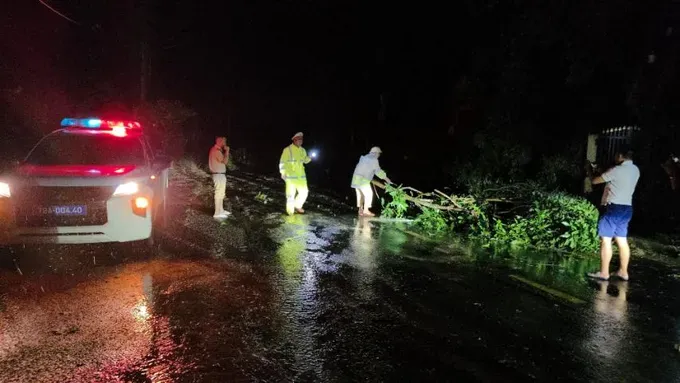
In Dak Lak, heavy rain and strong winds uprooted trees and ripped roofs off houses and schools. Local authorities banned residents from going outdoors after 4:30 p.m. and relocated dozens of coastal households affected by rising tides to Thanh Luong Pagoda for shelter.
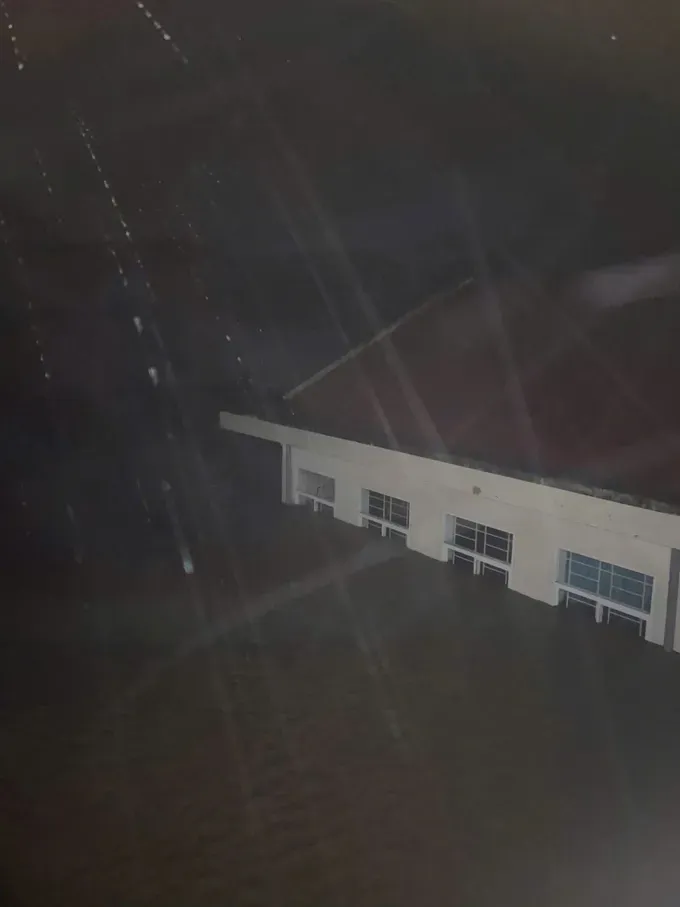
The provincial Military Command mobilized more than 3,800 officers and soldiers, 34 trucks, 60 specialized vehicles and 34 boats across 18 coastal communes and wards, ready to respond the typhoon.
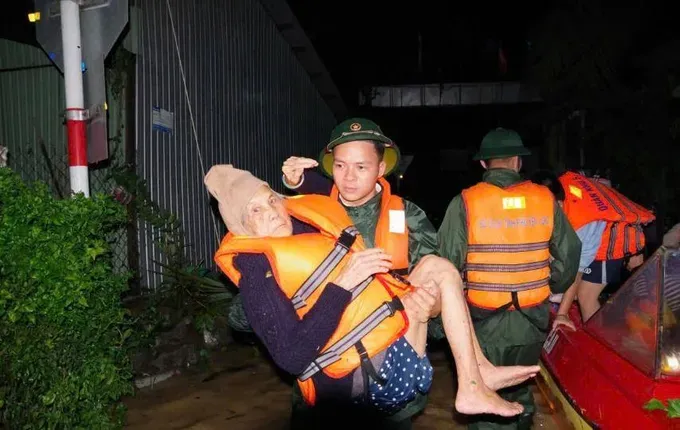
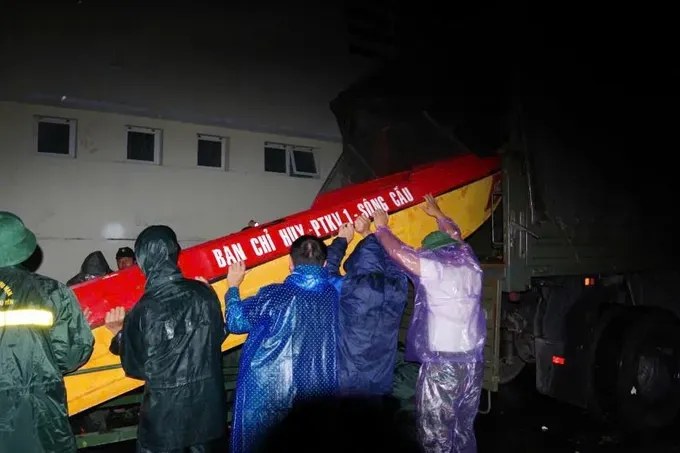

According to preliminary reports, heavy rain and flooding have submerged many roads in Song Cau Ward, Dak Lak Province, with some areas under up to 0.5 meters of water and numerous fallen trees.
In Dak Lak Province, Deputy Chairman of the Provincial People’s Committee Dao My reported that when the typhoon made landfall, the areas of Song Cau, Xuan Dai and Xuan Tho suffered extensive destruction due to strong winds. Local forces have been ordered to remain on standby, ready for rescue and relief operations.
On the night of November 6, Deputy Prime Minister Tran Hong Ha and a central working delegation arrived at the Frontline Command Center in Gia Lai Province to monitor and direct efforts for typhoon No. 13 prevention and recovery.
The Deputy Prime Minister requested the Ministry of National Defense, the Ministry of Science and Technology, Viettel and VNPT to ensure uninterrupted communications, and instructed Quang Ngai authorities to urgently rescue the stranded vessel Star Bueno off the Dung Quat coast as well as prepare contingency plans in case of an oil spill.
According to Lieutenant General Le Quang Dao, Deputy Chief of the General Staff of the Vietnam People’s Army, two task forces, each led by a Deputy Chief of the General Staff, have been deployed to Gia Lai and Quang Ngai provinces.
268,255 officers and soldiers, along with more than 6,700 vehicles and equipment from various industries, including artillery, navy, coast guard, special forces, communications, chemical and armored units, have been mobilized to respond to and mitigate the storm’s aftermath in the South-Central region.
Major General Le Van Sao, Deputy Commander of the Mobile Police Command, stated that the Ministry of Public Security has mobilized more than 30,000 officers and soldiers, over 1,000 boats and vessels, and around 7,000 various vehicles, ready to be deployed to support localities upon request.
>>>Below are some photos captured by SGGP reporters show the initial damage in Gia Lai, Dak Lak and Quang Ngai provinces.
